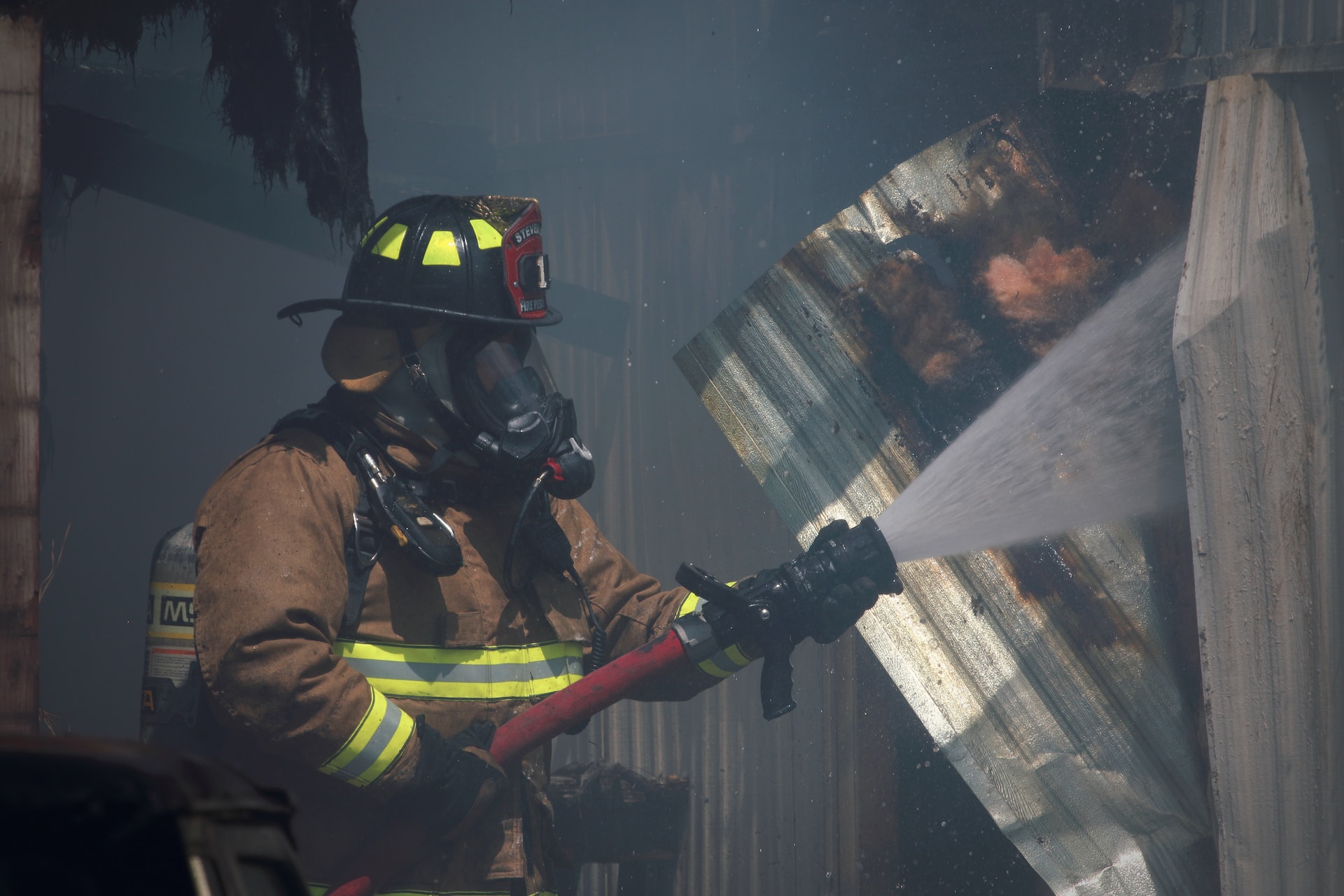Introduction: Fire incidents can strike at any moment, turning lives upside down and causing irreversible damage. To protect your property and loved ones, fireproofing is not just an option; it’s a necessity. In this comprehensive guide, we will delve into the world of fireproofing, exploring techniques, best practices, and expert insights to ensure your safety and peace of mind.
Acusfoc guarantee the qualification of our staff, not only in the machinery and products used, but also in occupational risk prevention training.
Fireproofing is not merely a buzzword; it’s a proactive approach to mitigate the devastating consequences of fires. Whether you’re a homeowner, business owner, or simply concerned about fire safety, this article will equip you with the knowledge you need to make informed decisions.
What Is Fire Proofing?
Fireproofing refers to the process of making materials and structures resistant to fire and its destructive effects. It involves various techniques and materials that can withstand high temperatures, flames, and heat, thereby preventing or slowing the spread of fires.
The Importance of Fire Proofing
Preserving Lives and Property
The foremost reason for fireproofing is to save lives and protect property. In the event of a fire, a fireproofed structure can provide precious extra minutes for evacuation, greatly increasing the chances of survival.
Legal Compliance
Many jurisdictions require fireproofing measures in residential and commercial buildings to comply with safety regulations. Non-compliance can lead to severe penalties and liabilities in case of fire-related incidents.
Insurance Benefits
Fireproofing your property can also lead to reduced insurance premiums. Insurance companies often offer incentives for fire-safe measures, recognizing the reduced risk of claims.
Fire Proofing Techniques
Passive Fireproofing
Passive fireproofing involves designing and constructing buildings with materials and methods that inherently resist fire. Here are some key aspects:
- Fire-Resistant Materials: Utilizing materials like fire-resistant drywall, doors, and windows can slow down the spread of flames.
- Compartmentalization: Creating fire-resistant compartments within a structure can prevent the fire from spreading to other areas.
- Fireproof Coatings: Applying fire-resistant coatings to structural elements, such as steel beams, can enhance their ability to withstand high temperatures.
Active Fireproofing
Active fireproofing, on the other hand, involves systems and equipment that actively combat fires. Some notable examples include:
- Sprinkler Systems: Automatic sprinkler systems can suppress fires in their early stages, limiting damage.
- Fire Alarms: Advanced fire alarm systems can quickly detect the presence of smoke or flames and alert occupants and authorities.
- Fire Extinguishers: Portable fire extinguishers are essential for immediate action in case of a small fire.
Fireproofing Your Home
Fire-Resistant Construction Materials
When building or renovating your home, prioritize fire-resistant construction materials. Opt for fire-rated drywall, which can resist flames and heat for an extended period.
Smoke Alarms and Fire Extinguishers
Install smoke alarms in key areas of your home, especially in bedrooms and kitchens. Additionally, keep fire extinguishers accessible and ensure everyone in your household knows how to use them.
Fire-Resistant Landscaping
Surrounding your home with fire-resistant plants and materials can create a buffer zone that reduces the risk of flames reaching your property.
Fireproofing Your Business
Fire Safety Plan
Develop a comprehensive fire safety plan for your business, including evacuation procedures, designated meeting points, and employee training.
Fire Suppression Systems
Consider investing in fire suppression systems tailored to your business type. These systems can be crucial in containing fires until the arrival of firefighters.
Regular Inspections
Regularly inspect and maintain fire safety equipment to ensure it functions correctly when needed. This includes fire alarms, sprinkler systems, and fire extinguishers.
Fire Proofing for Vehicles
Fire-Resistant Vehicle Features
When purchasing a vehicle, especially recreational vehicles (RVs) or boats, look for fire-resistant features. These may include fire-resistant upholstery, fuel system safety measures, and built-in fire extinguishing systems.
Safe Storage
Properly store flammable materials, such as gasoline, away from the vehicle. Additionally, ensure your vehicle’s electrical system is well-maintained to prevent electrical fires.
Emergency Response
Equip your vehicle with essential fire safety tools like fire extinguishers and a first-aid kit. In case of a vehicle fire, these items can be invaluable.
Fire Proofing for Wildfire Prone Areas
Create Defensible Zones
If you reside in a wildfire-prone area, create defensible zones around your property by clearing away dead vegetation and debris. This can prevent wildfires from spreading to your home.
Fire-Resistant Roofing
Consider using fire-resistant roofing materials like metal, asphalt shingles, or clay tiles to reduce the risk of embers igniting your home.
Ember-Resistant Vents
Install ember-resistant vents on your home to prevent embers from entering and starting fires within your attic or crawl spaces.
FAQs
Q: Can fireproofing guarantee 100% protection?
A: While fireproofing significantly improves your chances of survival and property preservation, it doesn’t offer absolute protection. It provides valuable time for evacuation and reduces damage.
Q: Are all fireproofing materials the same?
A: No, fireproofing materials vary in their resistance levels. It’s essential to choose materials that meet your specific needs and comply with local building codes.
Q: Do I need a professional for fireproofing my home?
A: It’s advisable to consult with a fire safety professional to assess your property and recommend suitable fireproofing measures.
Q: Can I retrofit my existing home with fireproofing measures?
A: Yes, you can retrofit your home with various fireproofing techniques and materials. Consult with a professional for guidance.
Q: What’s the cost of fireproofing a typical home?
A: The cost of fireproofing varies depending on the size and complexity of your property. It’s an investment in safety and should be budgeted accordingly.
Q: Does insurance cover fireproofing expenses?
A: Typically, insurance policies do not cover the cost of fireproofing. However, they may offer reduced premiums for fire-safe measures.
Conclusion
Fireproofing is an essential aspect of safeguarding your property and loved ones from the destructive force of fires. By understanding the techniques and best practices outlined in this guide, you can take proactive steps to mitigate risks and ensure a secure future. Remember, in matters of fire safety, preparedness is the key to protection.
Invest in fireproofing today, and grant yourself the peace of mind that comes with knowing you’ve done everything possible to prevent and minimize the impact of fires on your life and property. Don’t wait until it’s too late—take action now and be fire-ready.




